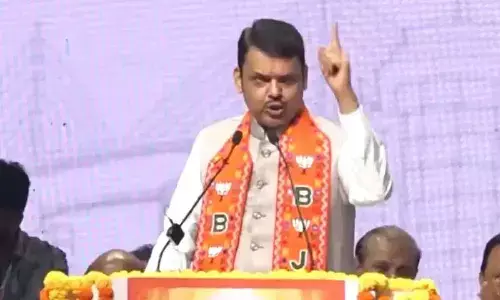NPAs stabilising across public sector banks in India: SBI

Challa Sreenivasulu Setty, Managing Director (R&DB), SBI
The country’s largest lender likely to reach `1 lakh-crore in gold loans segment by the end of this fiscal
What is your take on the Indian economy?
During the Covid-19 first and second waves in the country, many industries were affected badly. From June 2021, there has been an uptick in the economy. Again, it was marginally impacted due to the third wave during January 2022 but most of the industries have reached their pre-pandemic levels. This is a good development, and consumption is also picking up now.
Broadly, I think the economy is on the track and a lot of efforts have been taken by the Reserve Bank of India (RBI) and the Central government to keep the interest rates low and put the liquidity in the system for sufficient availability. The government's Emergency Credit Line Guarantee Scheme (ECLGS) has also supported small businesses to resume operations post pandemic.
Rating agency Moody's has recently pegged FY22 GDP growth at 9.3%. Is it possible to achieve that kind of growth?
It's definitely possible for India to achieve that growth rate. There could be some impact of the ongoing Ukraine-Russia issue in terms of how the inflation is going to play out. There will be an impact on the oil prices. Our understanding is that a lot of pent-up consumption demand, which has not been happening in the last couple of years due to pandemic, is likely to come back.
For instance, the real estate sector is witnessing good growth. Home-buying has almost increased to pre-pandemic levels. This is a good indicator. There are some contact-intensive industries like hotels and restaurants which are taking a little longer time. Otherwise, all industries are likely to come back. This is going to create an environment to achieve the estimated growth rate.
As inflation is inching up, do you think the RBI shall increase the key rates?
I think the RBI has chosen a balance between the inflation estimate and the growth. Many industries and businesses are still under recovery mode. The central bank didn't want to move towards higher rates of interest, until the industry is back to normal. I think that is the proper way of handling the inflationary trends.
The latest monetary policy committee also retained the key rates. The challenge would be in terms of inflationary pressures, determined by the crude oil affecting the petrol prices. This may prompt the RBI to relook at the key rates. In my view, the key rates are at bottom level and it is not possible to bring down. Either they can be maintained, or a slight increase is expected.
NPAs have become a big problem for public-sector banks. Will the NPAs come down in near future?
Currently, the NPAs at public-sector banks have stabilised now. What we have witnessed in the past, in terms of NPAs in corporate and small and medium-sized enterprise (SME) sectors, is widely under control now. Almost all the banks have realised that they have to be strengthening their underwriting standards.
More importantly, the corporate borrowers are also careful these days. They don't want to borrow unless their businesses can absorb the credit and they will be able to generate adequate cash flows to repay the loan. Most of the banks are also able to assess the cash flows at the companies. A lot of formulisation happened in the market.
With the advent of GST in India, the accounting by the entities is much better now. There is a transparency and we can access the GST data to see about their sales. This means, we know our customer better and the borrower is also aware that the banks cannot be given wrong data to get the loans. The whole banking ecosystem is moving towards much better governance.
What kind of growth levels SBI will clock this financial year?
SBI is doing very well on the deposit front. We are giving a lot of focus on deposits. We have increased the interest rates for some of the fixed deposit tenures. We want to take care of the depositors' interest also. All the loans offered by the bank – SME loans, personal loans, education loans and home loans – are linked to external benchmark.
As the RBI has reduced the repo rate, we also have reduced our interest rates on the loans. SBI is the first bank to be effective on time. Broadly, our customers are getting benefitted because of lowering the interest rates. Similarly, if the RBI increases the repo rates in the coming days, there will be some re-adjustment in the interest rates.
Will there be any further increase in interest rates on deposits in future?
What we have done is basically a re-adjustment in the tenure. But, the interest rate movement on the fixed deposits will depend on the guidance of the RBI.
How SBI is doing in gold loans segment?
Gold loan segment has a good potential as gold is an asset which is easy to monetise. SBI is the largest lender in the gold loans segment. We have also kept the lowest interest rates. We are probably one of the best in the gold loan market. Now, our customers can apply for a gold loan on our digital platform Yono app, the only formality being the mortgage process.
Our gold loans are of two types – agriculture gold loans are given to farmers for agriculture-oriented needs and personal gold loans are provided to any individual borrowers. We are strongly focusing on agriculture gold loans. Amaravathi circle (Andhra Pradesh and Telangana) is the major agriculture gold loan segment for us.
We offer 7 per cent interest rate for agriculture gold loan and 7.25-7.50 per cent for personal gold loan. Together, the bank's gold loan portfolio has around Rs 94,000 crore at present and our goal is to reach Rs 1 lakh crore by the end of this financial year. The gold loan borrowers are encouraged to apply online with minimum documentation.
Was there any surge in gold loans during the pandemic?
Initially, there were a lot of people opting for gold loan during the pandemic period due to some medical requirements. Slowly, it has come down. People have cash flows and the reliance on gold loan is lesser now. The people take a gold loan based on the gold price. If the price of yellow metal is higher, they take more gold loans. They don't take if the price is lower.
Are there any plans to launch digital gold?
There are no immediate plans to launch digital gold at our bank. Currently, we are offering physical gold investment and gold certificates/ bonds. SBI provides the option of buying Sovereign Gold Bonds (SGBs) online. Gold certificate market is still nascent in India.
What is your take on cryptocurrency? Should India ban it?
I don't think the banks have any view on crypto currencies. The Government of India says that the cryptocurrency would be an asset class and the regulator is focusing more on the introduction of India's Central Bank Digital Currency (CBDC) than the available cryptocurrencies. In my opinion, the CBDC would be a better option for us.















